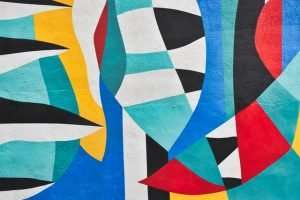Viking Art History is a blog created by an individual with a keen interest in the art and archaeology of the Viking Age. It aims to interpret and analyze the available evidence of Viking art and provide an accessible resource for anyone interested in this field. My particular interest is in exploring how art was used in the past, what it meant and how it functioned within society. I am specifically interested in how art intersected with politics, religion and history.
Formats explored: Objects from the archaeological record will be primarily discussed as I have no training in drawing or other artistic media. I also aim to provide more detailed information about some specific pieces of art, such as manuscripts and sculptures, by posting high resolution photographs of them.
This blog does not have a set schedule for publication but aims to post at least one entry per week on average.
About Me: I am a self-taught amateur historian with a particular interest in pre-modern Europe, which developed during my undergraduate studies of archaeology at university. Since then I have trained in online journalism and hope to achieve a career where I can combine my interests of writing, research and history. This blog is a side project that emerged when my writing began to take up more time than my studies did!
I
You know that slide show in which your kid is the star? Your kid has been practicing this speech for months, s/he’s memorized it, and when you finally hear it, it’s just . . . blaah.
That’s what this blog is like.
I’m writing a book about Viking art. Why Viking art? I have all kinds of reasons: I like the Vikings, I’m interested in how the people who lived in the past thought about their world, I’m fascinated by Vikings’ jewelry and their ship-burials and their metalwork . . . But deep down at root, I only had one reason for choosing this topic:
I wanted to be an art historian.
I love art history. I have loved it since I first learned about the art of other cultures, both ancient and modern. It’s so much more interesting than the Western tradition of paintings by dead white guys on canvas or marble, which frankly even now that I’ve spent almost twenty years studying them still bores me to tears. But there is a dark side to my love: I am not good at art history.
I don’t think like an art historian thinks. Their questions are not my questions. Their methods are not my methods. To put
This blog is about the history and culture of the vikings, including information on their art. The focus is mainly on art from the Viking Age, but there will be posts about earlier periods as well.
August 21, 2012 by Martin O’Brien
The ‘Prose Edda’, or ‘Younger Edda’ as it is sometimes known, is a collection of Icelandic texts containing stories about the gods and heroes that were an important part of Viking society. They are named after Snorri Sturluson who was born in 1179 AD in Iceland and lived much of his life there. He was an historian, poet and politician. He is most famous for writing the ‘Heimskringla’, a collection of sagas concerning Norse kings from Norwegian and Icelandic history. However, he also wrote several other works such as the ‘Edda’ (the ‘Poetic Edda’ and the ‘Prose Edda’), a handbook for writers in Old Norse called ‘Háttatal’, a dictionary called ‘Grammatikon’ and two works of law – one for Iceland (‘Gamli sáttmáli’) and one for Norway (‘Magnúss sáttmál’).
He was born as
We have seen the emergence of a new literary form, the blog, which has ushered in a new style of writing. Blogging is almost entirely text-based, but it differs from conventional writing in three ways:
* The writer and reader are nearly always anonymous.
* As a rule, every entry is written and published immediately.
* No one edits the entries before they are published. They are posted as they were written, complete with typos and grammar errors.
Today we will examine the phenomenon of blogging in more detail – why people blog, what they write about, and how their writing style has been influenced by their peculiar circumstances.”
What could be more exciting than the idea that a shadowy, mysterious past might be brought back to life through the work of your own hands?
The appeal of Viking art is obvious. And for a long time, it was believed that Viking artists were capable of creating works of great beauty and skill. Since then, archaeological evidence has slowly dispelled the idea that Vikings were capable of anything more than savagery.
Thing is, I don’t like being told what I can and cannot do by history.
I’m going to make some Viking art. See if it’s any good.
The study of the Norse culture and its artwork has been a popular pursuit for many years, with magazines and books on the subject appearing all the time. The art itself is usually referred to as Viking art, while the study of that art is called Viking archaeology.
Tthe first use of the term “Viking” in this context was by Hjalmar Frisk, who was referring specifically to adornments found in gravesites. The term was later used by Gustav Storm to describe those artifacts that were made by people of Scandinavian ancestry. Storm and other scholars noted that there were considerable stylistic differences between what they were calling “Viking art” and the earlier Germanic Iron Age artwork found in Scandinavia. This led them to suggest that there must have been two distinct groups of people living on the Scandinavian Peninsula; one group which had evolved from the original Germanic Iron Age population and another group who had joined it from elsewhere.
The word “Viking” implies piracy, so some scholars have rather controversially suggested that these new people were raiders who came from outside Scandinavia, possibly from Great Britain, Ireland or along the river systems of Eastern Europe. Other scholars have suggested that those buried with this kind of artwork were simply members of a social elite
For the full version, go to http://www.gutenberg.org/ebooks/23


